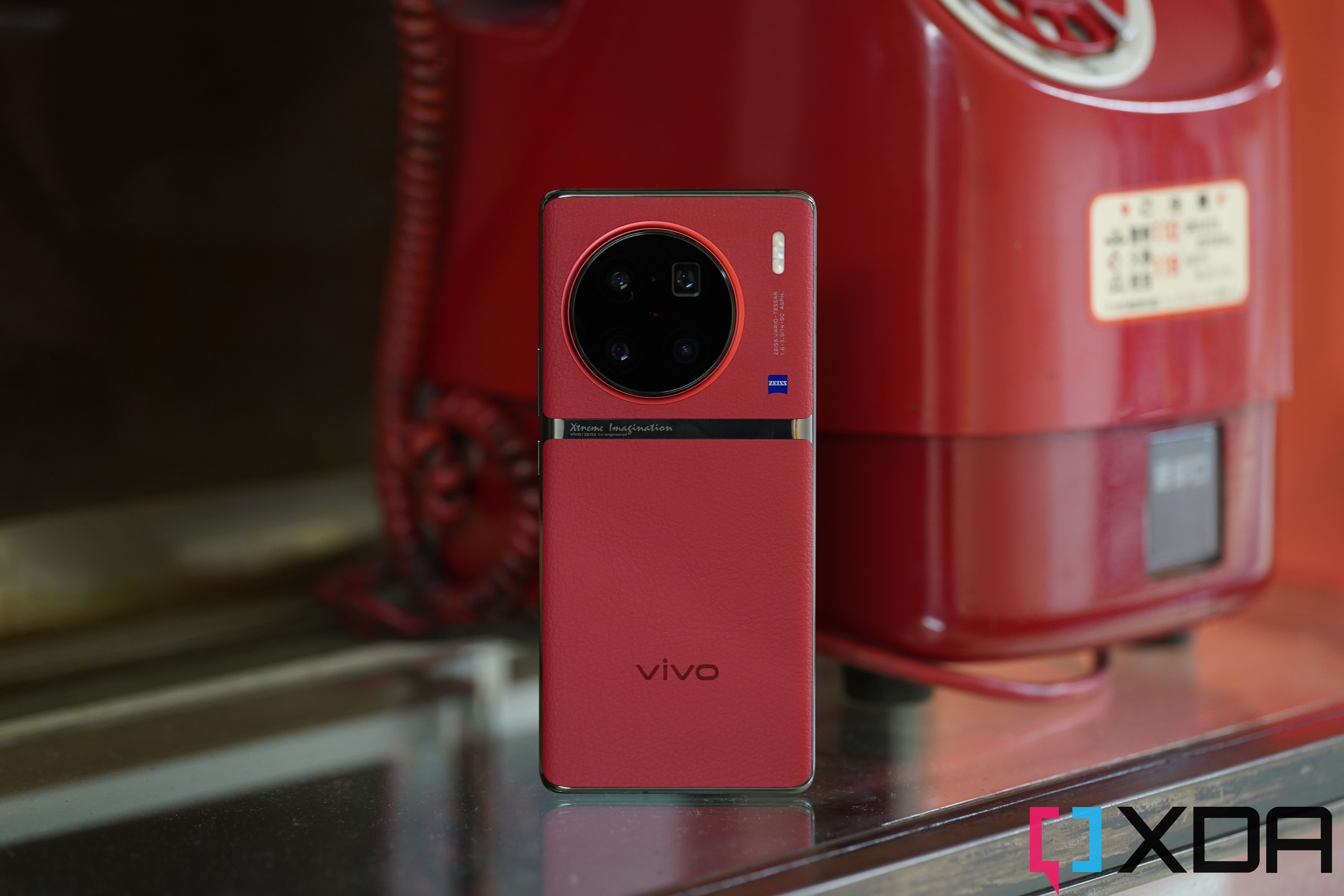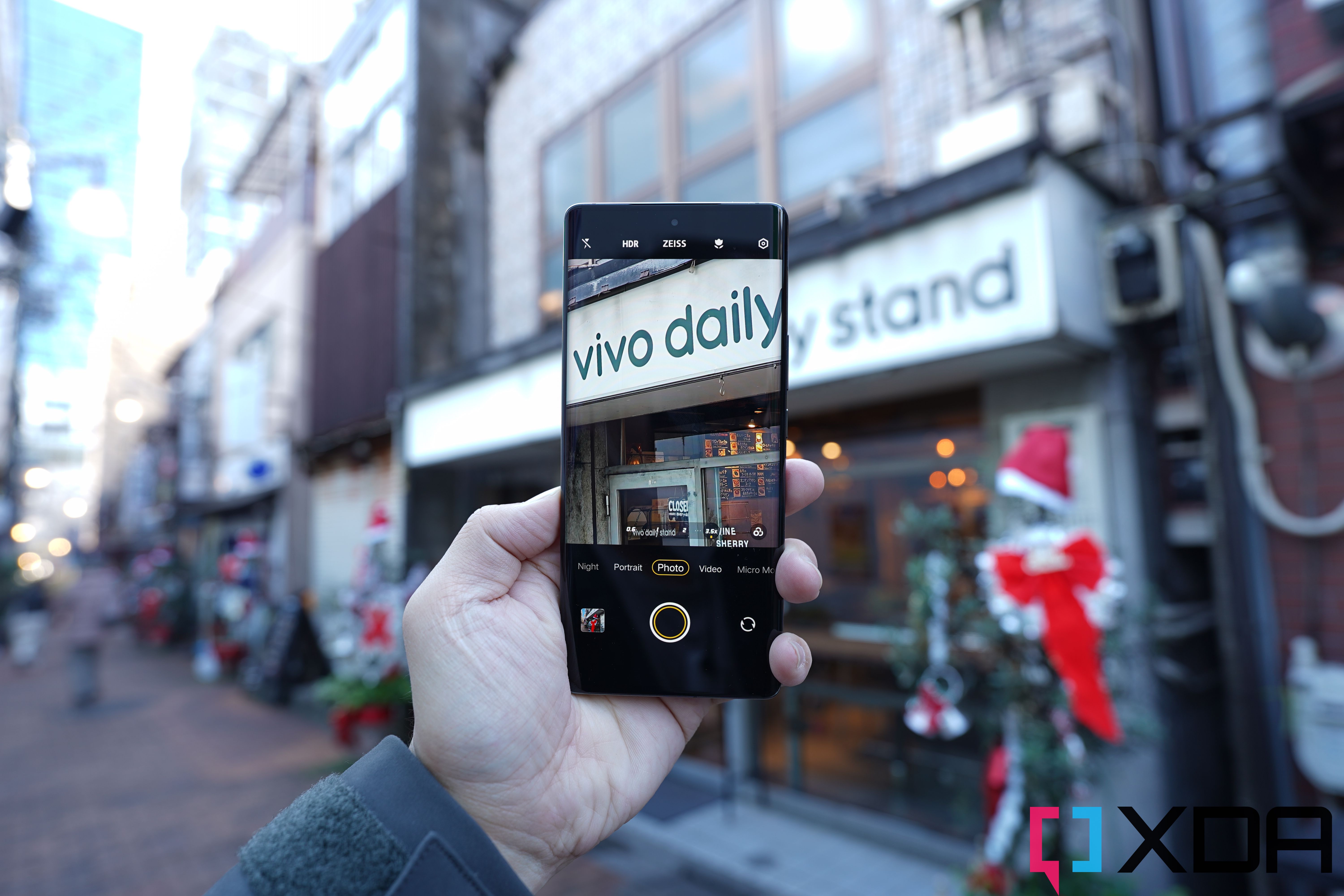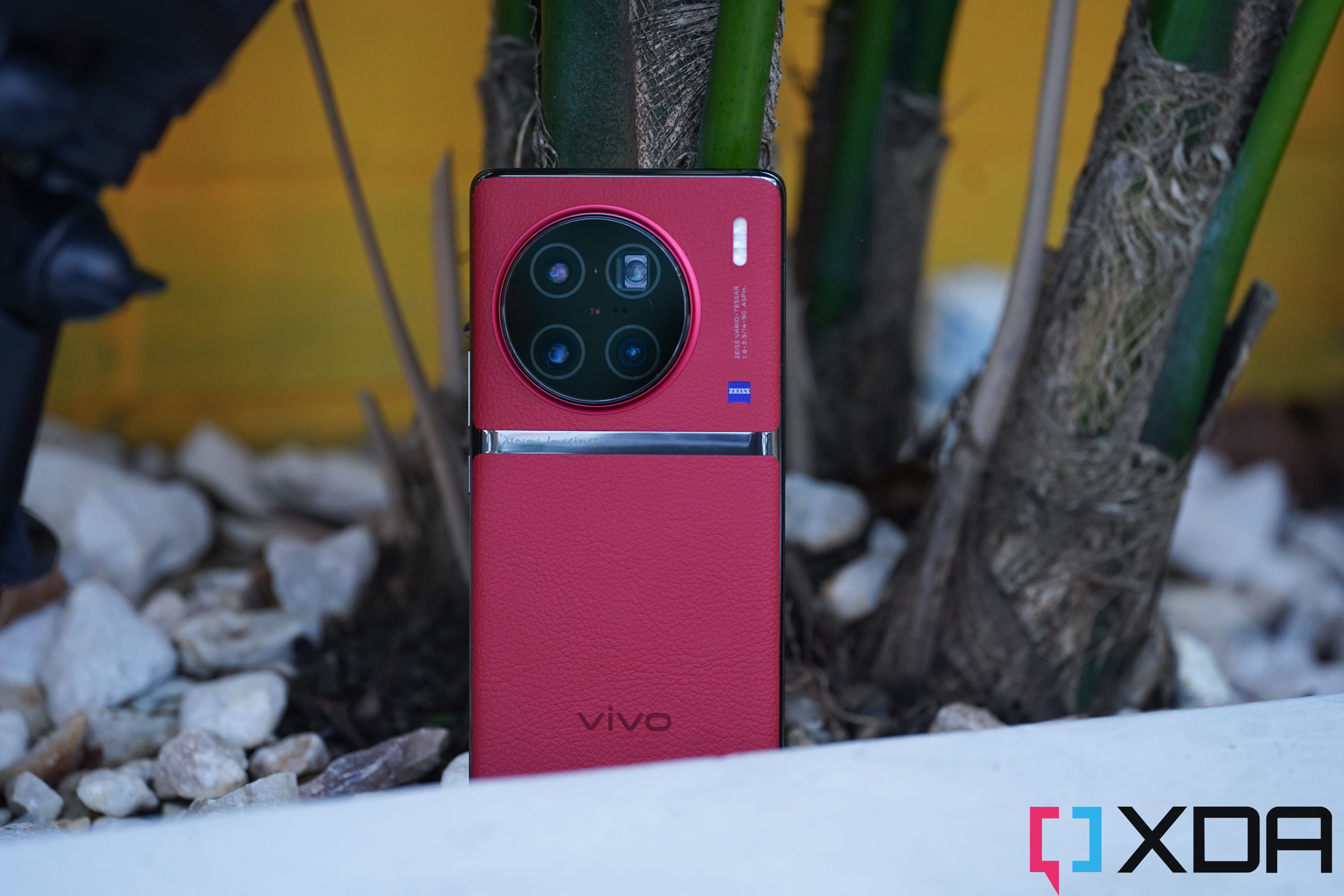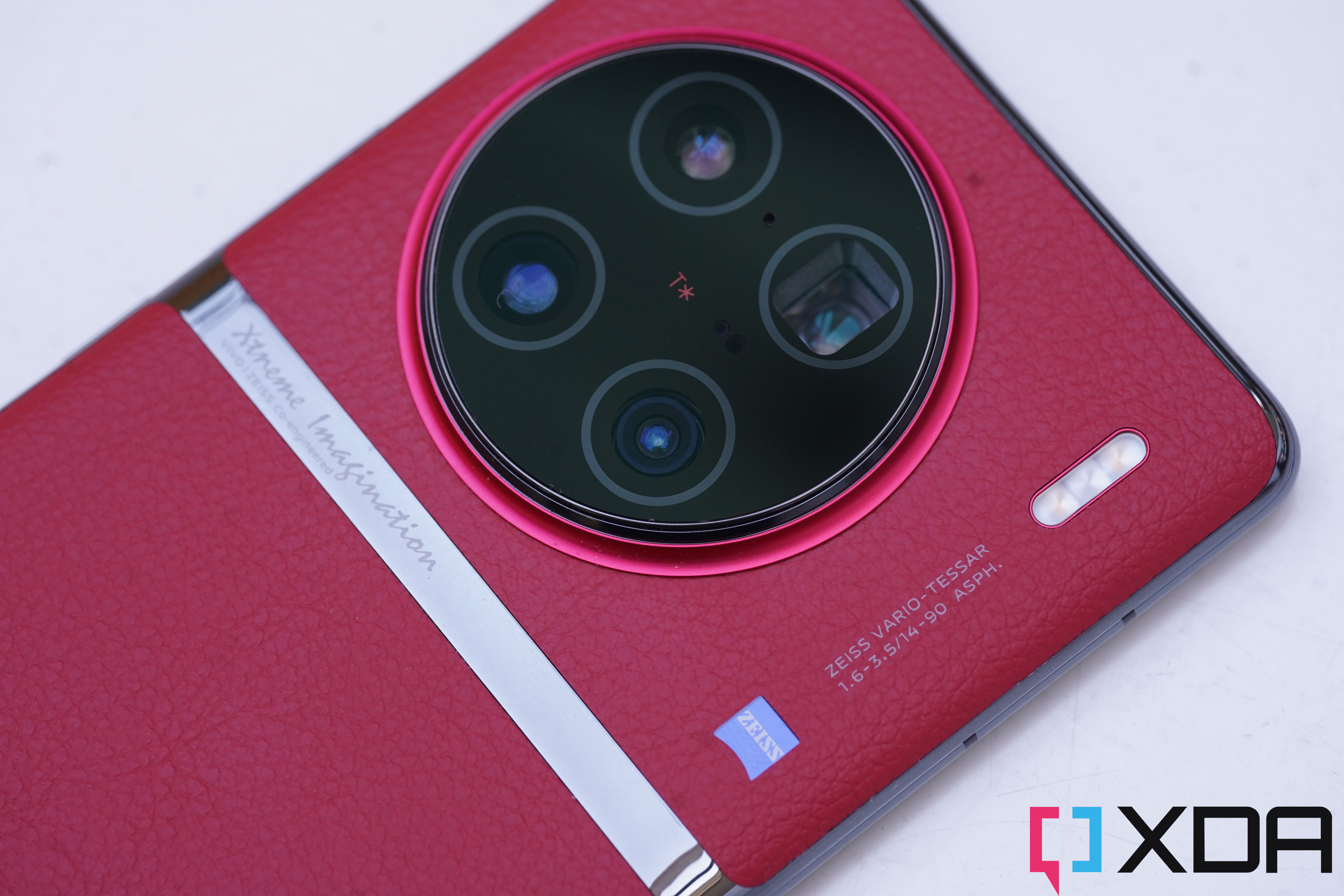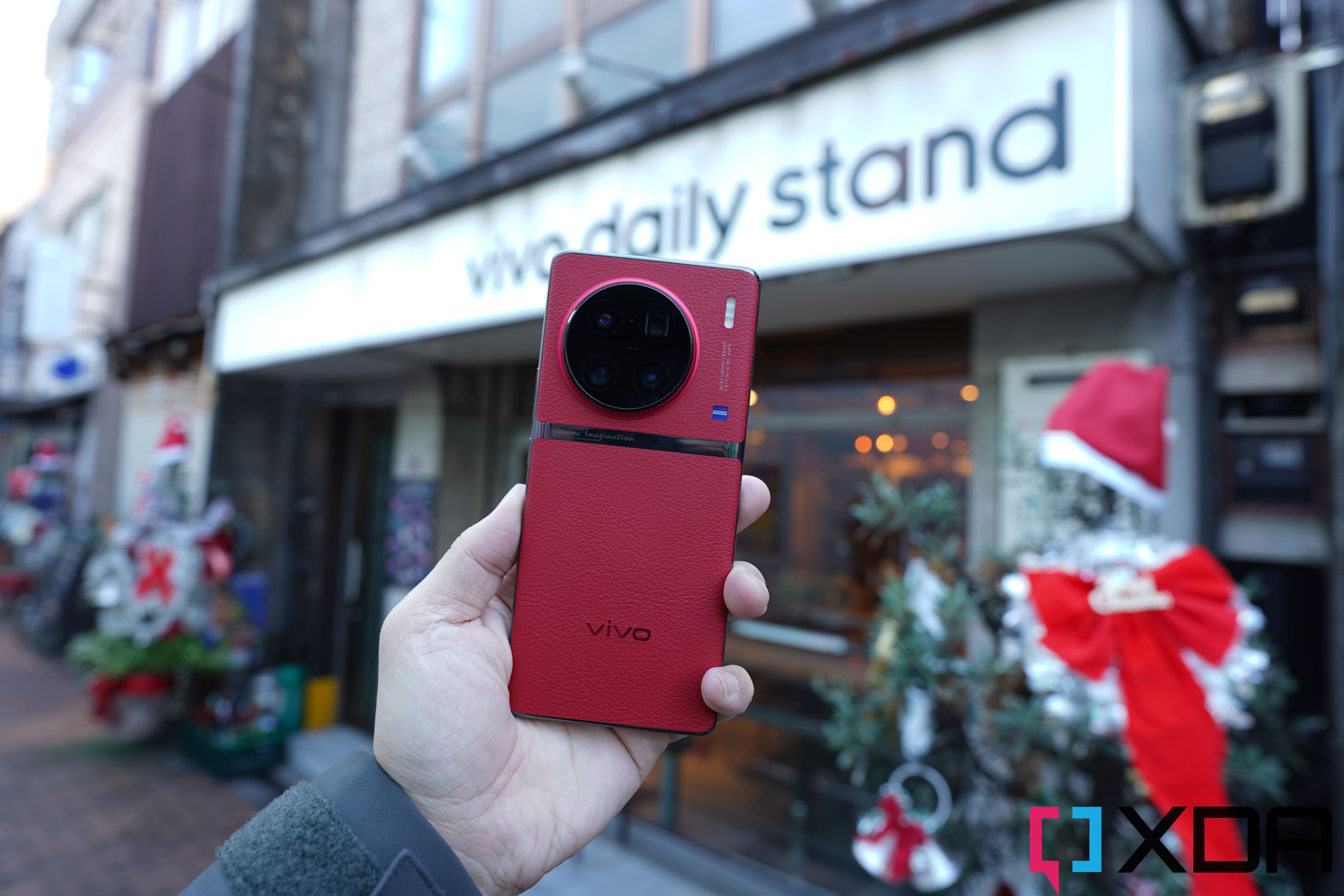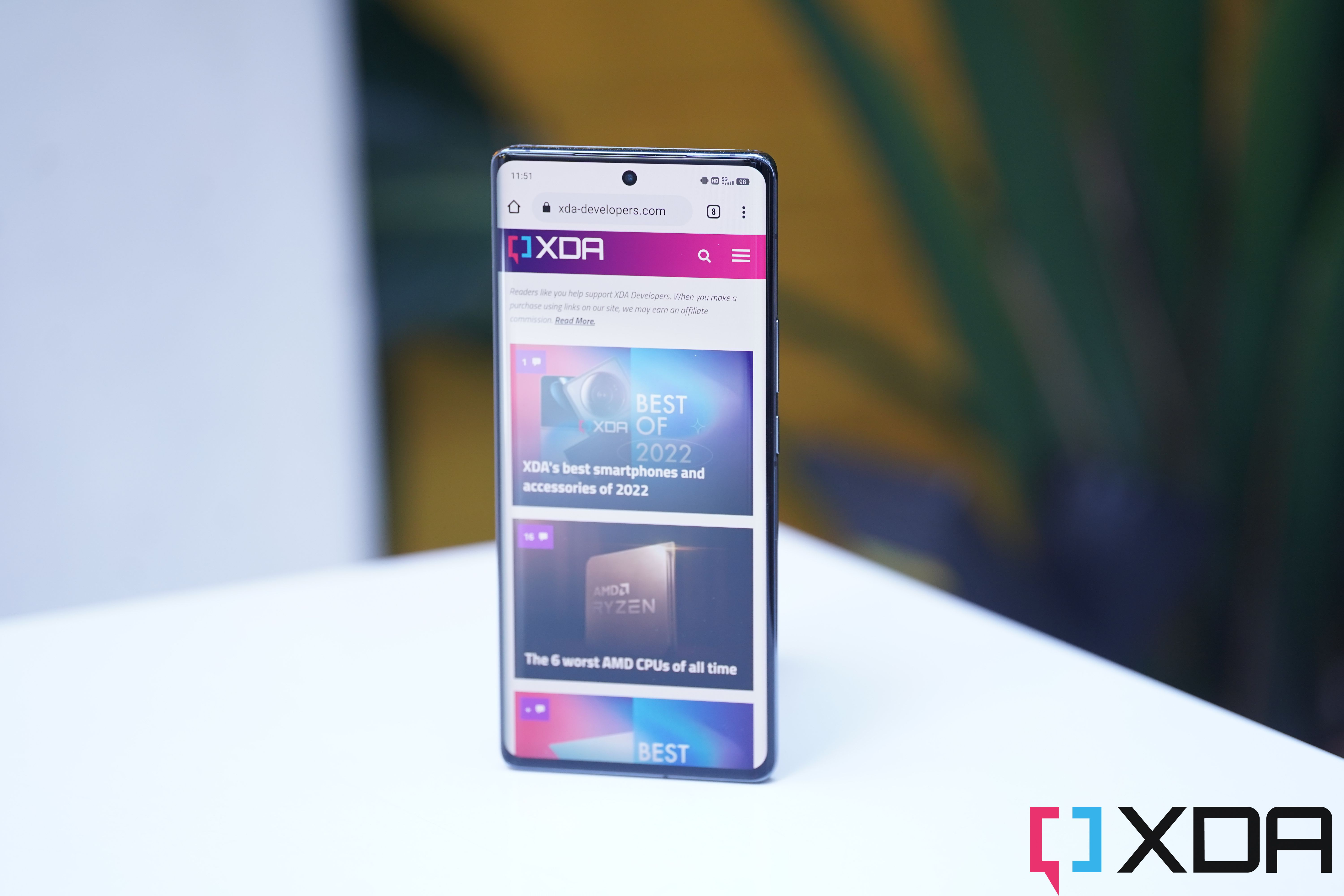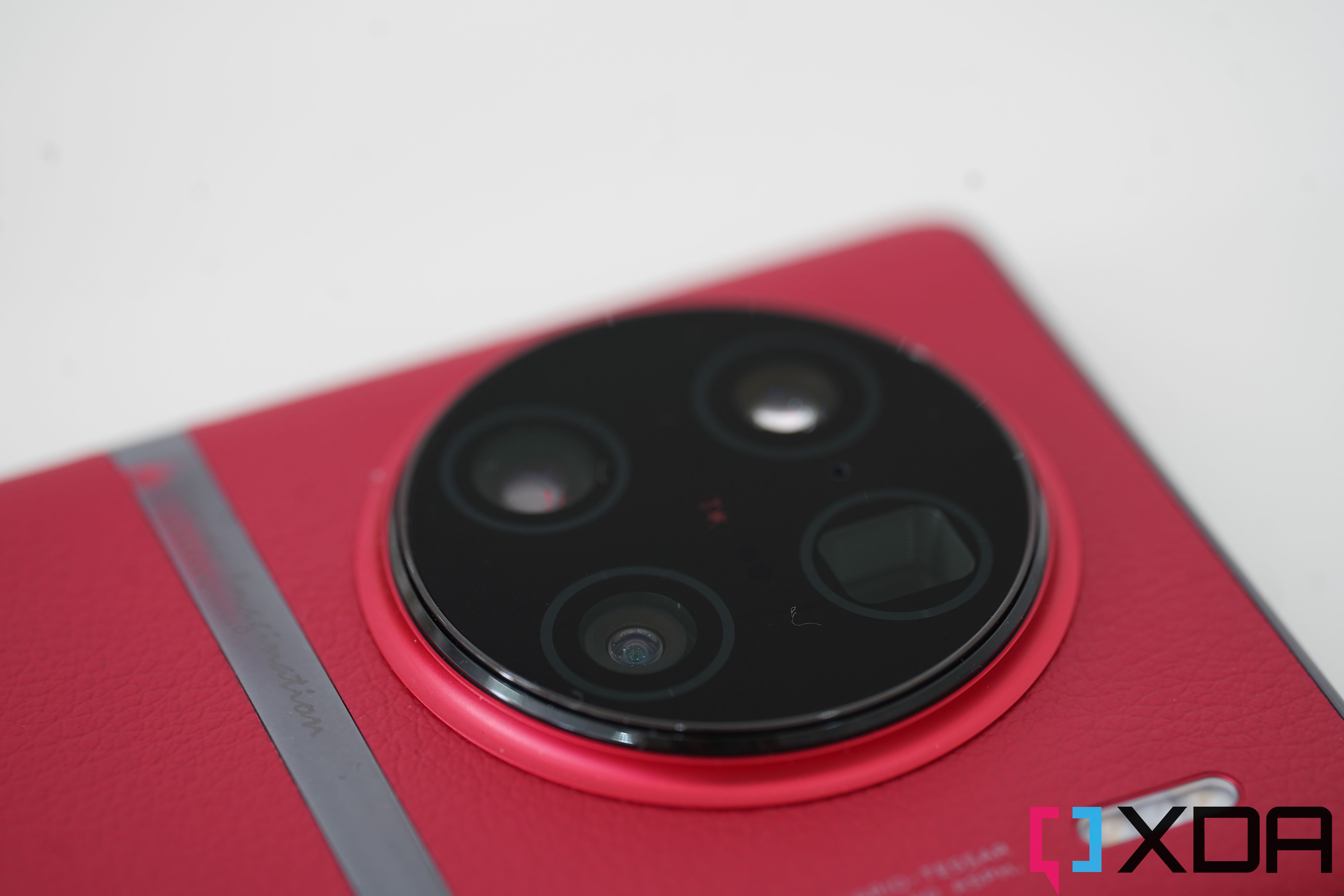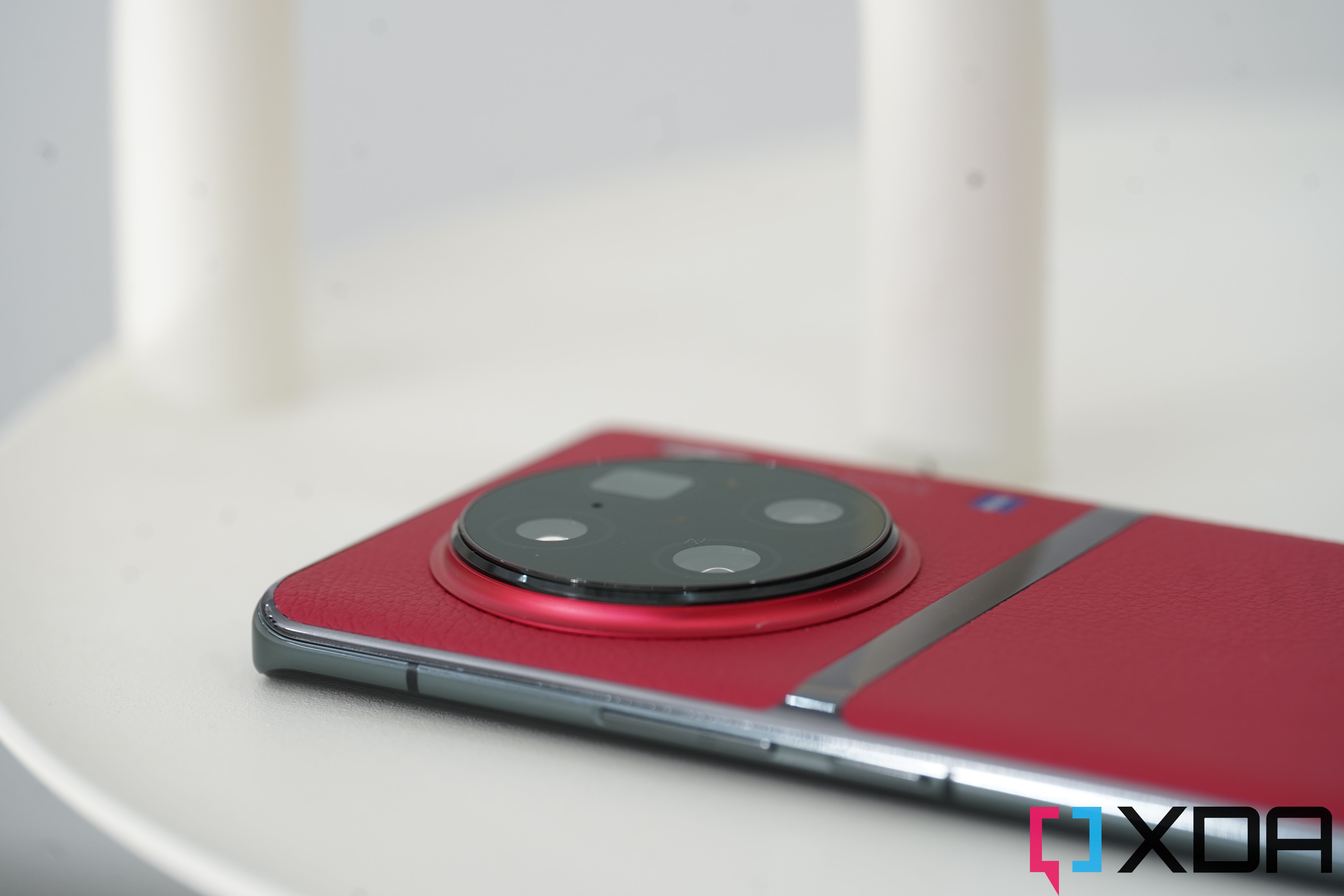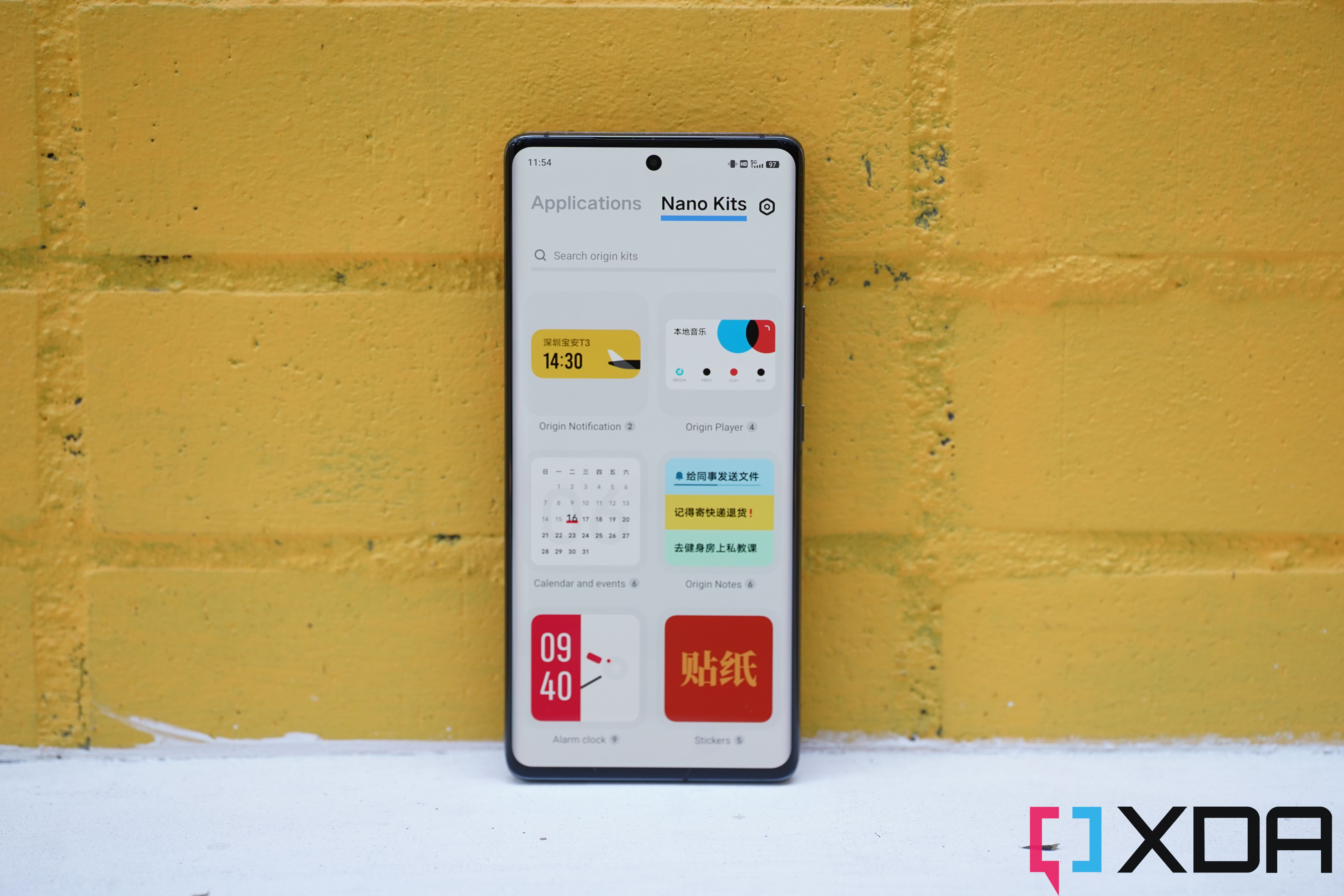Quick Links
The Vivo X90 Pro+ is an overkill phone in every sense of the word. From the unnecessarily long name to the tacky over-branding on its backside; the gigantic camera bump to the cutting-edge components used, it's the so-called "kitchen sink" phone because Vivo seemingly threw every mobile tech possible at it. In all my years of reviewing smartphones, only a few devices have hit the scene with this much "new" hardware: the Huawei Mate 20 Pro and Samsung Galaxy S20 Ultra. The Vivo X90 Pro+ joins the list.
The device, along with the entire Vivo X90 series, is on sale only in China for now, but a European/Asia launch is coming, likely in January. Unfortunately, this phone won't reach North America officially. Even if that's the case, the X90 Pro+ is a noteworthy phone and has been attracting attention for its camera prowess.
About this review: I purchased my own Vivo X90 Pro+ from a phone importer in Hong Kong. The review was written after nine days with the device. Vivo had no input in the review.

|
Pros |
Cons |
|
Best camera hardware in any smartphone right now |
Garish overbranding on phone's back |
|
Newest SoC, display tech, and storage standards in mobile |
Only available in China for now, but a global rollout will happen |
|
Relatively low-priced compared to peers in China, making importing not too expensive |
Will almost certainly see a price markup when launching overseas, particularly in Europe |
Vivo X90 Series specifications
|
Specification |
Vivo X90 Pro+ |
Vivo X90 Pro |
Vivo X90 |
|
Dimensions & Weight |
|
|
|
|
Display |
|
|
|
|
SoC |
Qualcomm Snapdragon 8 Gen 2 |
MediaTek Dimensity 9200 |
MediaTek Dimensity 9200 |
|
RAM & Storage |
|
|
|
|
Battery & Charging |
|
|
|
|
Security |
|
|
|
|
Rear Camera(s) |
|
|
|
|
Front Camera(s) |
32MP f/2.45 |
32MP f/2.45 |
32MP f/2.45 |
|
Port(s) |
USB Type-C |
USB Type-C |
USB Type-C |
|
Audio |
Dual speakers |
Dual speakers |
Dual speakers |
|
Connectivity |
|
|
|
|
Software |
OriginOS 3 based on Android 13 |
OriginOS 3 based on Android 13 |
OriginOS 3 based on Android 13 |
Design and hardware: Do we really need all that branding?
- Gigantic camera bump surrounded by gratuitous branding could be divisive
- Tremendous 2K Samsung E6 AMOLED display
- Packed with the newest components like Snapdragon 8 Gen 2 SoC and UFS 4.0 storage
The Vivo X90 Pro+ has an eye-catching back design that could be divisive, particularly the red color model I'm testing. The gigantic camera bump that protrudes half an inch from the body is somehow located off-center. The vegan leather (aka fancy plastic made to feel like leather) that wraps around the back is tinted in crimson red (although there's a more understated black option) and broken up by a metallic bar that runs horizontally. I would normally love the addition of this metal bar, which adds contrast, but here it's marked by a garish tagline that reads "Xtreme Imagination — Vivo/Zeiss co-engineered." I roll my eyes every time I look at it.
This metallic bar is just one of four places you'll find Zeiss branding on the phone's back. There's also the Zeiss logo, along with "Zeiss Vario Tessar" text usually found in Zeiss camera lenses, and one final Zeiss T logo on the camera module itself. Vivo really should take a note from Huawei, Xiaomi, or Oppo: Just because you've partnered with a legacy camera brand doesn't mean you let its branding overtake the whole phone.
If anyone from Vivo is reading this, I highly recommend getting rid of the "Xtreme Imagination" text for the international model (if it's not too late in the manufacturing process already) because I am sure I won't be the only English reviewer to mock it.
Despite all this, I still think the phone looks... good? I've always been a fan of circular camera modules and leather backs, so from afar, when I'm not staring at tacky slogans and logos, I still dig the overall aesthetic.
The front side of the phone of the phone won't look unusual for anyone who's seen a flagship Android phone over the last few years. It's yet another edge-to-edge screen that curves on the left and right side, interrupted by a small center-placed hole punch. The 6.78-inch display panel, however, is noteworthy because it uses Samsung's E6 AMOLED display with a 3200 x 1440 resolution and a refresh rate up to 120Hz. This is the newest and best display technology in mobile, with improvements in viewing angles and anti-flickering technology (1440Hz PWM). Underneath the display is an in-display fingerprint reader using Qualcomm's 3D Sonic Max technology. Simply put, this is the best possible screen on mobile devices right now.
The internal components are all on the cutting edge too. The X90 Pro+ runs on the Qualcomm Snapdragon 8 Gen 2 — this is the first phone to ship with the silicon — with 12GB of LPDDR5X RAM and 256GB of UFS 4.0 storage. The latter is the latest in mobile storage standards and sees improvements in read/write speeds, as well as energy efficiency, over UFS 3.1. There's a 4,700 mAh battery that can be fast charged via the included charger at 80W speed and wirelessly charged at up to 50W.
Whether it's the E6 display panel, UFS 4.0 storage, or 3D Sonic Max in-display scanner, these are all innovative components that most Americans won't even have access to until 2023. All this, and we haven't gotten to the cameras yet.
Cameras: The best new camera system on the market
- Main system consists of a quad lens array, headlined by a Sony IMX989 1-inch sensor
- Two zoom lenses cover 2x and 3.5x focal lengths, which are ideal for portraits
- Vivo's V2 imaging chip produces uncanny HDR
While Vivo isn't as widely known like Apple or even Huawei and Xiaomi, it has built a reputation among smartphone enthusiasts in the past year for having one of the best camera systems around. In fact, I think the Vivo X70 Pro+ and X80 Pro understandably held the best mobile camera title for nearly a year before the Xiaomi 12S Ultra dethroned it recently with its 1-inch camera.
Vivo has now adopted that same IMX989 1-inch camera sensor to the X90 Pro Plus, and the results are as impressive as I expected. The 1-inch sensor pulls in a lot of image information producing shots that look more organic with stronger dynamic range than an inferior sensor. The 1-inch sensor has a natural shallow depth-of-field for genuine bokeh in photos. The following set of photos were all snapped with the main camera, in auto mode, without any tweaking or post-shot editing.
To see the difference between a large sensor camera and a smaller sensor camera, see the below samples. Vivo's images on the left clearly have more depth and exhibit stronger separation between subject and background than the iPhone 14 Pro Max's photos.
But this is to be expected — I've seen similar results from shots captured by the Xiaomi 12S Ultra. What surprised me was how strong the other cameras are.
The X90 Pro+ features a pair of zoom lenses, a 50MP 2x telephoto camera using Sony's IMX758 sensor and a 64MP periscope zoom lens with a 3.5x optical zoom (this one uses a lesser-known Omnivision sensor). The two zoom lenses equate to about 50mm and 90mm focal length, and they're meant for snapping portraits — the former for typical chest-up portraits, the latter for entire upper body shots.
The focal length and sensor size result in some natural depth-of-field even without resorting to software-generated digital bokeh, but the good news is Vivo does a very good job of that too. I happened to be traveling around Tokyo while testing this camera, and I snapped some portraits and street photography I genuinely love. (The vintage filter and watermark can be removed — I left them in because I thought they added to the photos' quality.)
However, turning the periscope zoom lens into a 3.5x portrait lens means the X90 Pro+ has taken a step back in long zoom photography compared to previous Vivo devices with a 5x periscope lens. But the 3.5x lens has enough pixels to compensate, and for the most part, the X90 Pro+' 10x zoom shots can rival the Pixel 7 Pro's but loses to Samsung's dedicated 10x optical lens in the Galaxy S22 Ultra. If you examine the samples below, Samsung's 10x zoom (on the right) is just a tad sharper and better detailed than Vivo's.
One of the reasons Vivo's X70 Pro+ and X80 Pro became the best camera phones from late 2021 through most of 2022 was because they produced uncanny HDR. Whether I was shooting against backlight or in high-contrast scenes, the last two Vivo flagships produced perfectly balanced shots without blowing out any lights. Much of that was due to Vivo's self-developed imaging chip, the V1, and the X90 Pro+ gets the next-gen V2 chip. I don't quite know exactly where the improvements are in the V2 (I'm reviewing this phone cold, without any media briefing or press releases). Still, it produces perfectly balanced shots every time, no matter the light source. This HDR capability carries over to all four lenses, too, including the ultra-wide camera.
To demonstrate Vivo's HDR prowess, we've inserted some side-by-side samples below against the best phones made by Apple, Samsung, and Google. Notice right away the iPhone 14 Pro Max completely botches the shot (far right), blowing out the light source through the window while underexposing the shadowed areas. The Galaxy S22 Ultra and Vivo X90 Pro+ both produced a well-balanced HDR shot, but if you zoom closer you can see Vivo's image is clearly sharper and more detailed. The Pixel 7 Pro (second from left) made the decision to keep the shadows darker for contrast, and one can argue it's the best shot of the bunch. Whatever the case, the Vivo X90 Pro+ is, at worst, the second-best of the four, with the iPhone in dead last.
Video recording has improved significantly in recent years, too. The X90 Pro+ exhibits the same superb HDR across all four lenses during video recording, and video stabilization is among the best in Android. You can see lots of video samples in the video below.
The 32MP selfie camera is fine; it captures shots with accurate skin tones and keeps exposure on my face without blowing out the background too much. One shortcoming is the front-facing camera can still only shoot video in 1080p resolution, not 4K.
Overall, the Vivo X90 Pro+ is arguably the new best camera system on the market and can almost rival Samsung's Galaxy S22 Ultra for versatility. The latter's 10x zoom shots are still slightly better, but the X90 Pro+ has a better camera everywhere else. This is a camera system that earns its camera bump.
Software: OriginOS with some useful widgets
- Runs OriginOS based on Android 13, but it doesn't feel like it
- OriginOS has an aesthetic that's perhaps a ripoff of iOS, but it brings a lot of useful features
- Google apps run fine
This device I'm testing is a China retail unit running Android 13, but it's hard to tell because Vivo's very heavy OriginOS screen is on top. Many of Android 13's new features, such as the built-in QR code scanner in the shortcut toggle buttons, to the Material You theming engine, have just about been done away with. However, some of the crucial new privacy features of Android 13 are still available.
OriginOS has been knocked for having an aesthetic that looks very iOS-inspired, and I won't dispute that. Still, once you get past the lack of originality, OriginOS is a great-looking UI with lots of extra touches that I wish Android would adopt.
The main differentiating factor between OriginOS and other versions of Android is that OriginOS's home screen is designed to be widget-heavy, and most of these widgets are interactive. For example, in the below screenshots, you can see the first two pages of my home screen. The photo gallery and calendar widget on the first page is fully interactive. I can swipe through the gallery to cycle through photos or scroll further down several weeks on the calendar, all directly on the home screen. Likewise, I can begin or stop a recording by tapping on the recorder widget on the second page without ever needing to open the app fully.
Animations are fluid and the UI overall zips around without hiccups. There are myriads of customization options, including the ability to set one sideswipe to launch an app instead of "going back." This makes sense since most people only swipe one side to go back, so having both sides do that action seems redundant. Also, because this phone was meant for the China market, it does not come with Google apps out of the box, but Google Mobile Services is fully supported and simply requires installing a few APKs to get Google up and running.
Performance: Unsurprisingly great
- Snapdragon 8 Gen 2 with 12GB of RAM keeps things speedy
- Excellent battery life
- Can get 5G in California via T-Mobile
With the newest Qualcomm flagship silicon and the latest standards for RAM and storage, it's no surprise that the Vivo X90 Pro+ performs very well. I didn't encounter any slowdowns or app crashes throughout my week-plus of using the device. And the phone could obviously handle any app I threw at it. I shot and edited many videos on the device during my trip to Tokyo, and I found the Snapdragon 8 Gen 2 and UFS 4.0 storage brought noticeable speed improvements when trimming and editing videos. Whether I was exporting 360-degree footage via the Insta360 app, using PowerDirector for 4K video edits, or building a Reel on Instagram, the Vivo X90 Pro Plus performed tasks faster than, say, the Pixel 7 Pro or Galaxy S22 Ultra.
Battery life is strong, with the phone able to last all day easily. Even during heavy-use days, the phone could go about 15 hours on a single charge. It's also worth noting that I got 5G connectivity in Japan (via Japanese carrier SoftBank) and in Los Angeles (via T-Mobile). This hasn't always been the case with China-only phones.
Vivo X90 Pro+: Should you buy?
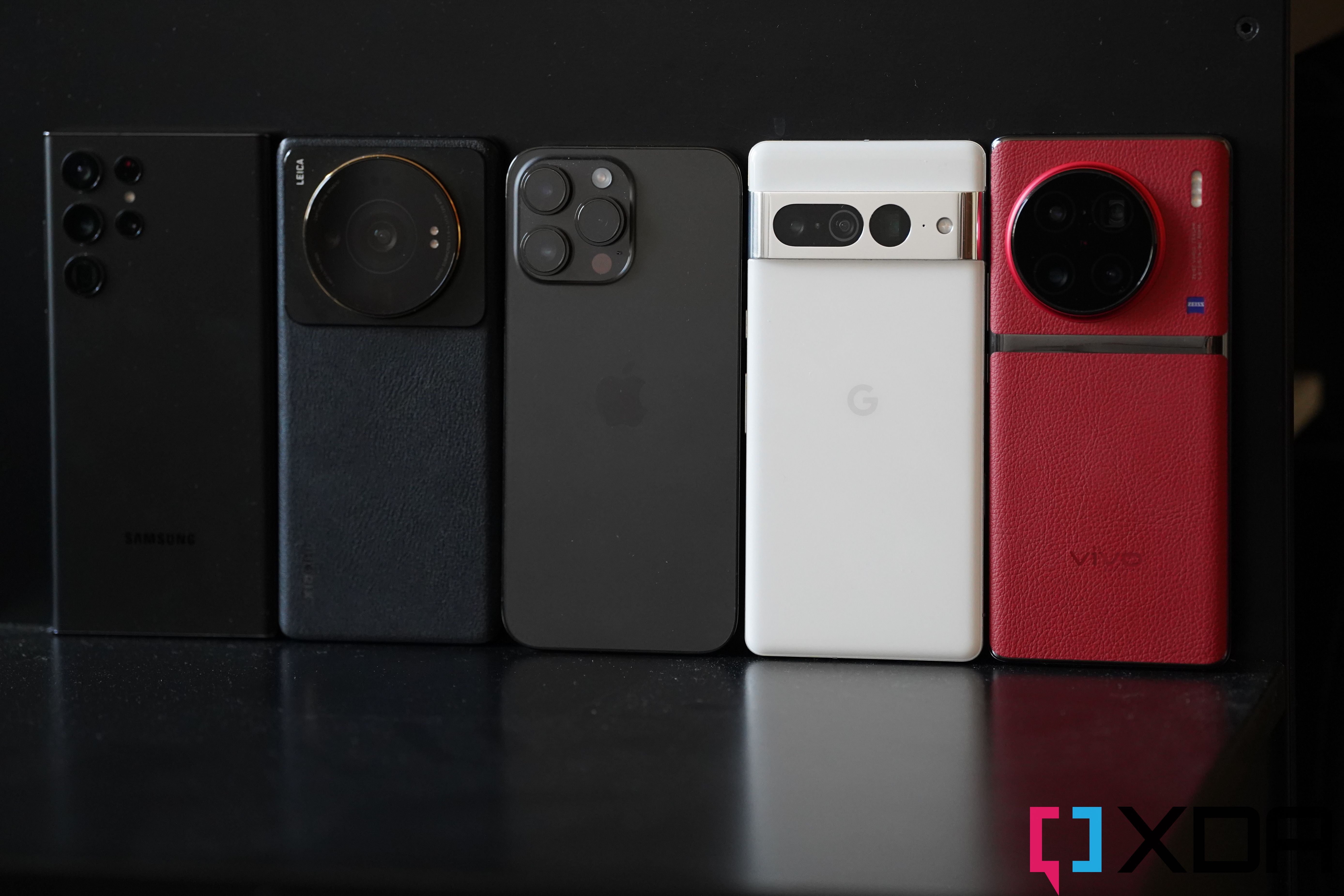
You should buy the Vivo X90 Pro+ if:
- You live in China (or will visit China soon) and want the best new Android phone
- You are open to importing phones
- You want the latest in mobile tech that won't make it to the North American market for another few months
You should not buy the Vivo X90 Pro+ if:
- You live in Europe or Southeast Asia (or plan to visit those regions soon) and can wait a month or two because this phone will launch in those regions
- You don't like heavy-handed Chinese Android skins
The Vivo X90 Pro+ is currently selling only in China, but its relatively low starting price of 6499 yuan ($930) means even importing it won't result in an exorbitant price. I purchased my unit from Trinity Electronics in Hong Kong for about $1,050, including shipping to Japan. However, I am aware importing phones with no official warranty and after-sales service for buyers is not something most normal consumers would do. This means, for the most part, most of you folks reading this can't buy this right now.
The phone will launch internationally, mainly in Southeast Asia and Europe, in early 2023, so you will have to wait if you're interested. There will likely be a markup, especially for the European market, but as long as it isn't huge, I can give it a full recommendation. Vivo's camera prowess has been on display for well over a year, so the X90 Pro Plus is no fluke. This is probably the most capable camera hardware right now. The rest of the hardware components, from display to fingerprint scanner, memory to silicon, are all bleeding edge technology that most chunks of the world don't even have access to. This is the new kitchen sink phone and sets the bar high for incoming 2023 flagships.

